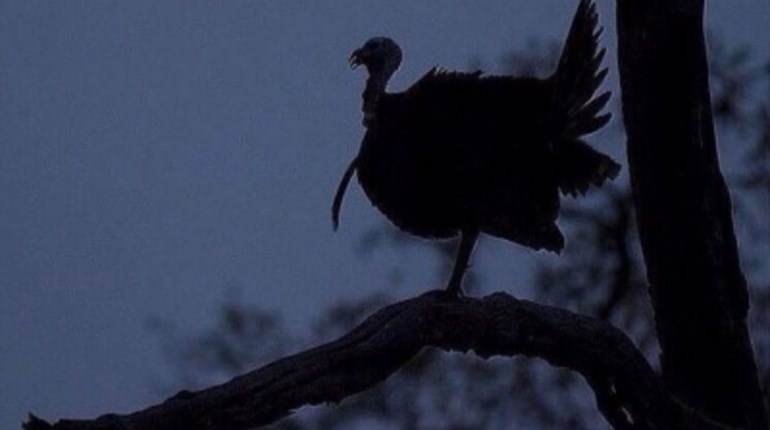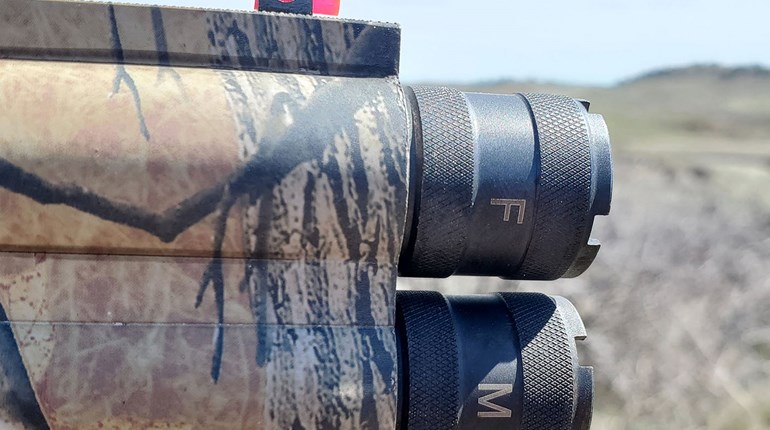
When the alarm on your smartphone rings opening morning of turkey season, will you have a plan in place to tag out? Public lands and crowded private properties require you to do more than just show up. Motivated and unmotivated hunters on all lands possess the proverbial monkey wrench to undo your opening day plan. Consider this timetable as you put together your opening day hunt schedule.
Pre-Hunt
Before the opening bell sounds, ensure you nail down a location to hunt regardless whether you hunt private or public. Flocks feeding on edges or in hollows, preseason gobbles, trail camera images and insight from others in the area all provide clues as to the turkey population.
Depending on the region of the country, determine likely roosting sites, feeding areas and, in arid areas like the Southwest, determine water sources turkeys will visit. A hunting app is invaluable while scouting from home or work, wink-wink.
In addition to the natural resource connections you uncover, note all access avenues into a property. The mainstream hunting crowd follows a lemming mentality using the established routes. Search to find any backdoor and underutilized points of entrance available. The evening before season, put in the time to roost a gobbler. Now set that alarm.
Predawn
Be Batman on opening morning. Use the early cover of darkness for two reasons. Reason No. 1 is to sneak as close to the roost fly-down area as possible. Use unlit obscurity and a slow, stealthy approach to guarantee you do not alert roosted birds to your presence. On clear nights, especially with a full moon, this becomes more important, as these conditions create Mother Nature’s night-light.
The second reason is to dishearten the enthusiasm of others arriving later. Your parked vehicle could cause hunters to go elsewhere on the property or outright move to another property. At a minimum, you have reserved what you deem the best spot, so stake your decoy. Now arrange your gear quietly and catnap until the tree yelps begin.

Sunrise
This is your big chance. With any luck the tom has roosted with the hens or you have positioned between him and his roosted flock. Just before the sun officially rises, you will be tested. First to test you are tree-yelping hens. Hold back your enthusiasm. Joining in on occasion with a few soft tree yelps gives any tom above ample landing strip coordinates. No need to get into a tree fight or raise the volume to dance-club levels. You can argue with hens later if the tom misses the landing zone.
The second test could be other hunters themselves. Let’s hope your night-before roosting mission gave you a few more minutes of breathing room for a solo sunrise setup. Unfortunately, too much gobbling from a testosterone-charged tom could direct others your way. Again, curb your calling to reduce the enthusiasm of the roosted flock to give you a few morning minutes of solitude.
Breakfast
Get ready for disappointment, but keep to your schedule. If the roost setup fails, allow the turkeys to move on then hustle to their breakfast nook. Scouting again plays a critical role as turkeys typically move to an area for feeding soon after flying down. This could include scratching in an oak draw, pecking through a cattle pasture or even scouring agricultural fields.
Gobbling may decrease, so listen for subtle sounds of hens clucking, soft yelps and even purrs as you move covertly to avoid bumping birds. Next, slide into the area and stake a decoy or three to attract the attention of the hopeful arrivals. Once they make an appearance, begin a subtle conversation and spike the enthusiasm if the return chat warrants.
Brunch
Midmorning could be a bust, but instead of calling it quits, grid the hunting area and still-hunt through respective zones using a variety of calls. Varying your calls sets you apart from any hunting competition in the area. Yelping from ridgetops sends a long-range greeting, but as you course through valleys and coulees, utilize excitable cutting, soft clucks and even purrs.
A low-volume start to any calling sequence in a new location is advisable to possibly jumpstart a chat, but if low-key fails, bump up the volume and agitation. Sometimes it takes a bit of turkey turmoil to get a response from a flock.
 If the roost setup fails, hustle to the breakfast nook. If that fails to produce results, too, trust your preseason scouting and consult your game plan for the remainder of the day.
If the roost setup fails, hustle to the breakfast nook. If that fails to produce results, too, trust your preseason scouting and consult your game plan for the remainder of the day.
Lunch and Afternoon
Lunchtime could mean the end to your hunt in several states. If you did not tag out, reset your alarm for your next hunting day. If your state allows all-day hunting, consider the woods as empty. Most hunters head to camp or town for lunch, with many calling it quits realizing that the morning flurry of turkey talk oftentimes is the best. It may be, but turkeys talk all day. It is your job to spark the conversation.
Like midmorning, midafternoon offers the chance to troll the woods for a responsive tom. Instead of focusing on feeding areas, look toward afternoon locations that provide cover. In the South, the intensity of the sun could already be prompting turkeys to seek out shady hideouts. Pines, cedars and other trees that do not annually shed their leaves provide the shade turkeys need during a spring heat wave before official leaf-out.
Conversely, in the North turkeys may seek out shelter from cold spring weather, including winds. Sneak into deep canyons, dense pines and even Great Plains shelterbelts to find turkeys loitering away their afternoon hours.
Let’s hope your scouting revealed the next travel leg of your target turkey flock. The flock may stay near their morning hangout or disappear into the woods. Follow along. Hawk or crow calls work wonders in igniting an afternoon gobble. Once you see a solid setup, go back to the strategy of starting low and work toward a frenzy with calls. The turkeys will let you know their preference.
Sunset
This period has pros and cons. The pro: Turkeys that use a traditional roost should arrive just before dark. Depending on your state’s shooting hours, you could set up right in a natural passing zone and call in a tom. Lone toms especially pine for companionship just before flying into a roost. Use caution, though. You do not want to bump a flock and alter their roost preference if they habitually return to an area day in and day out.
For those flocks that jump from bedroom roost to bedroom roost, use your evening to again locate turkeys on the roost. The knowledge of knowing the exact location of a roosted tom or entire flock gives you the starting point for the next morning. Return to your opening day schedule. You have a tag to fill and that alarm will ring loudly again very shortly.




































